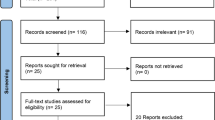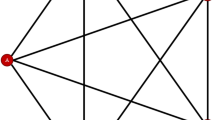Abstract
Objective
This study aimed to assess the relative efficacy and safety of olokizumab at different dosages in patients with active rheumatoid arthritis (RA).
Methods
We performed a Bayesian network meta-analysis to combine direct and indirect evidence from randomized controlled trials (RCTs) to examine the efficacy and safety of olokizumab administered intravenously to RA patients at 64 mg/kg every 2 or 4 weeks (Q2 or Q4W).
Results
Five RCTs comprising 2609 patients met the inclusion criteria. Both olokizumab Q2 and Q4W treatments achieved a significant American College of Rheumatology 20% response (ACR20) compared with the placebo (odds ratio [OR] 3.21, 95% credible interval [CrI] 2.53–4.09; OR 3.05, 95% CrI 2.43–3.86). However, olokizumab Q2W was associated with the most favorable surface using the cumulative ranking curve (SUCRA) for the ACR20 response rate. The ranking probability based on the SUCRA indicated that olokizumab Q2W had the highest probability of being considered the best treatment option for achieving the ACR20 response rate, followed by olokizumab Q4W, adalimumab, and placebo. The ACR50 and 70 response rates showed a similar distribution pattern to the ACR20 response rate, except that olokizumab Q4W had a higher-ranking probability than olokizumab Q2W for ACR50. The SUCRA rating likelihood of adverse events (AEs) and withdrawal due to AEs showed that a placebo was likely to be the best intervention.
Conclusion
Both olokizumab Q2 and Q4W were efficacious and well-tolerated treatments for active RA.
Zusammenfassung
Ziel
Ziel der vorliegenden Studie war es, die relative Wirksamkeit und Sicherheit von Olokizumab in verschiedenen Dosierungen bei Patienten mit aktiver rheumatoider Arthritis (RA) zu untersuchen.
Methoden
Es wurde eine Bayes-Netzwerk-Metaanalyse zur Kombination direkter und indirekter Evidenz aus randomisierten kontrollierten Studien (RCT) durchgeführt, um die Wirksamkeit und Sicherheit von Olokizumab in der Dosierung von 64 mg/kg alle 2 Wochen (Q2W) oder alle 4 Wochen (Q4W) als i.v.-Gabe bei Patienten mit aktiver rheumatoider Arthritis (RA) zu untersuchen.
Ergebnisse
Die Einschlusskriterien wurden von 5 RCT mit 2609 Patienten erfüllt. Sowohl die Therapie mit Olokizumab Q2W als auch Q4W erzielte eine signifikante Therapieantwort von 20% gemäß American College of Rheumatology (ACR20) im Vergleich zu Placebo (Odds Ratio, OR: 3,21; 95%-Glaubwürdigkeitsintervall, „95% credible interval“, 95%-CrI: 2,53–4,09; OR 3,05; 95%-CrI: 2,43–3,86). Jedoch war Olokizumab Q2W mit der günstigsten Oberfläche bei Einsatz der kumulativen Rangfolgekurve (SUCRA, „surface using the cumulative ranking curve“) für die ACR20-Ansprechrate vergesellschaftet. Die Ranking-Wahrscheinlichkeit auf der Grundlage der SUCRA zeigte, dass Olokizumab Q2W die höchste Wahrscheinlichkeit aufwies, als beste Therapieoption zur Erzielung der ACR20-Ansprechrate zu gelten, danach folgten Olokizumab Q4W, Adalimumab und Placebo. Die ACR50- und ACR70-Ansprechraten wiesen ein ähnliches Verteilungsmuster wie die ACR20-Ansprechrate auf, außer, dass Olokizumab Q4W eine höhere Ranking-Wahrscheinlichkeit für ACR50 besaß als Olokizumab Q2W. Die SUCRA-Bewertungs-Wahrscheinlichkeit für unerwünschte Ereignisse (AE) und Therapieabbruch aufgrund von AE zeigte, dass ein Placebo am ehesten die beste Intervention darstellte.
Schlussfolgerung
Sowohl Olokizumab in der Dosierung Q2W als auch in der Dosierung Q4W war eine wirksame und gut verträgliche Behandlung der aktiven RA.




Similar content being viewed by others
References
Kim H, Sung Y‑K (2021) Epidemiology of rheumatoid arthritis in Korea. J Rheum Dis 28(2):60–67
Lee Y‑K, Bae S‑C (2021) Mortality in Korean patients with rheumatoid arthritis. J Rheum Dis 28(3):113–118
Fonseca JE, Santos MJ, Canhao H, Choy E (2009) Interleukin‑6 as a key player in systemic inflammation and joint destruction. Autoimmun Rev 8(7):538–542
Nurnberg W, Haas N, Schadendorf D, Czarnetzki BM (1995) Interleukin‑6 expression in the skin of patients with lupus erythematosus. Exp Dermatol 4(1):52–57
Srirangan S, Choy EH (2010) The role of interleukin 6 in the pathophysiology of rheumatoid arthritis. Ther Adv Musculoskelet Dis 2(5):247–256
Emery P, Keystone E, Tony HP, Cantagrel A, van Vollenhoven R, Sanchez A et al (2008) IL‑6 receptor inhibition with tocilizumab improves treatment outcomes in patients with rheumatoid arthritis refractory to anti-tumour necrosis factor biologicals: results from a 24-week multicentre randomised placebo-controlled trial. Ann Rheum Dis 67(11):1516–1523
Xu Z, Bouman-Thio E, Comisar C, Frederick B, Van Hartingsveldt B, Marini JC et al (2011) Pharmacokinetics, pharmacodynamics and safety of a human anti-IL‑6 monoclonal antibody (sirukumab) in healthy subjects in a first-in-human study. Br J Clin Pharmacol 72(2):270–281
Shaw S, Bourne T, Meier C, Carrington B, Gelinas R, Henry A et al (2014) Discovery and characterization of olokizumab: a humanized antibody targeting interleukin‑6 and neutralizing gp130-signaling. Mabs: Taylor Francis p:773–781
Nasonov E, Fatenejad S, Feist E, Ivanova M, Korneva E, Krechikova DG et al (2022) Olokizumab, a monoclonal antibody against interleukin 6, in combination with methotrexate in patients with rheumatoid arthritis inadequately controlled by methotrexate: efficacy and safety results of a randomised controlled phase III study. Ann Rheum Dis 81(4):469–479
Smolen JS, Feist E, Fatenejad S, Grishin SA, Korneva EV, Nasonov EL et al (2022) Olokizumab versus placebo or adalimumab in rheumatoid arthritis. N Engl J Med 387(8):715–726
Genovese MC, Fleischmann R, Furst D, Janssen N, Carter J, Dasgupta B et al (2014) Efficacy and safety of olokizumab in patients with rheumatoid arthritis with an inadequate response to TNF inhibitor therapy: outcomes of a randomised phase IIb study. Ann Rheum Dis 73(9):1607–1615
Takeuchi T, Tanaka Y, Yamanaka H, Amano K, Nagamine R, Park W et al (2016) Efficacy and safety of olokizumab in asian patients with moderate-to-severe rheumatoid arthritis, previously exposed to anti-TNF therapy: results from a randomized phase II trial. Mod Rheumatol 26(1):15–23
Feist E, Fatenejad S, Grishin S, Korneva E, Luggen ME, Nasonov E et al (2022) Olokizumab, a monoclonal antibody against interleukin‑6, in combination with methotrexate in patients with rheumatoid arthritis inadequately controlled by tumour necrosis factor inhibitor therapy: efficacy and safety results of a randomised controlled phase III study. Ann Rheum Dis. https://doi.org/10.1136/ard-2022-222630
Catalá-López F, Tobías A, Cameron C, Moher D, Hutton B (2014) Network meta-analysis for comparing treatment effects of multiple interventions: an introduction. Rheumatol Int 34(11):1489–1496
Song GG, Lee YH (2016) Comparison of disease activity score 28 using C‑reactive protein and disease activity score 28 using erythrocyte sedimentation rate in assessing activity and treatment response in rheumatoid arthritis: a meta-analysis. J Rheum Dis 23(4):241–249
Caldwell DM, Ades A, Higgins J (2005) Simultaneous comparison of multiple treatments: combining direct and indirect evidence. BMJ 331(7521):897
Hochberg MC, Chang RW, Dwosh I, Lindsey S, Pincus T, Wolfe F (1992) The American College of Rheumatology 1991 revised criteria for the classification of global functional status in rheumatoid arthritis. Arthritis Rheum 35(5):498–502
Aletaha D, Landewe R, Karonitsch T, Bathon J, Boers M, Bombardier C et al (2008) Reporting disease activity in clinical trials of patients with rheumatoid arthritis: EULAR/ACR collaborative recommendations. Arthritis Care Res 59(10):1371–1377
Moher D, Liberati A, Tetzlaff J, Altman DG (2009) Preferred reporting items for systematic reviews and meta-analyses: the PRISMA statement. Ann Intern Med 151(4):264–269
Brown S, Hutton B, Clifford T, Coyle D, Grima D, Wells G et al (2014) A Microsoft-Excel-based tool for running and critically appraising network meta-analyses—an overview and application of NetMetaXL. Syst Rev 3(1):110
Salanti G, Ades A, Ioannidis JP (2011) Graphical methods and numerical summaries for presenting results from multiple-treatment meta-analysis: an overview and tutorial. J Clin Epidemiol 64(2):163–171
Dias S, Welton NJ, Sutton AJ, Caldwell DM, Lu G, Ades A (2013) Evidence synthesis for decision making 4 inconsistency in networks of evidence based on randomized controlled trials. Med Decis Making 33(5):641–656
Higgins J, Jackson D, Barrett J, Lu G, Ades A, White I (2012) Consistency and inconsistency in network meta-analysis: concepts and models for multi-arm studies. Res Synth Methods 3(2):98–110
Valkenhoef G, Lu G, Brock B, Hillege H, Ades A, Welton NJ (2012) Automating network meta-analysis. Res Syn Meth 3(4):285–299
Lee YH, Bae SC, Song GG (2011) The efficacy and safety of rituximab for the treatment of active rheumatoid arthritis: a systematic review and meta-analysis of randomized controlled trials. Rheumatol Int 31(11):1493–1499
Lee YH, Bae SC, Choi SJ, Ji JD, Song GG (2012) Associations between interleukin-10 polymorphisms and susceptibility to rheumatoid arthritis: a meta-analysis. Mol Biol Rep 39(1):81–87
Song GG, Bae SC, Lee YH (2014) Association of the MTHFR C677T and A1298C polymorphisms with methotrexate toxicity in rheumatoid arthritis: a meta-analysis. Clin Rheumatol 33(12):1715–1724
Lee YH (2018) An overview of meta-analysis for clinicians. Korean J Intern Med 33(2):277–283. https://doi.org/10.3904/kjim.2016.195
Author information
Authors and Affiliations
Corresponding author
Ethics declarations
Conflict of interest
Y.H. Lee and G.G. Song declare that they have no competing interests.
For this article no studies with human participants or animals were performed by any of the authors. All studies mentioned were in accordance with the ethical standards indicated in each case.
Additional information
Redaktion
Ulf Müller-Ladner, Bad Nauheim
Uwe Lange, Bad Nauheim

Scan QR code & read article online
Rights and permissions
About this article
Cite this article
Lee, Y.H., Song, G.G. Comparison of the efficacy and safety of olokizumab at different dosages in patients with active rheumatoid arthritis: a network meta-analysis of randomized controlled trials. Z Rheumatol 83 (Suppl 1), 107–114 (2024). https://doi.org/10.1007/s00393-023-01367-w
Accepted:
Published:
Issue Date:
DOI: https://doi.org/10.1007/s00393-023-01367-w




